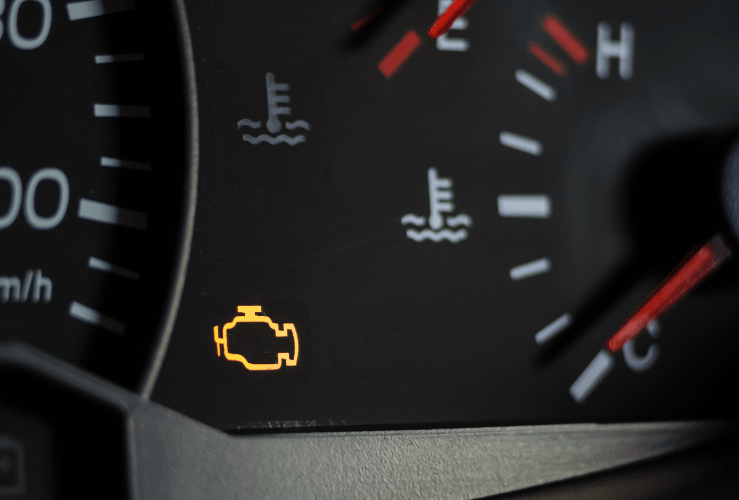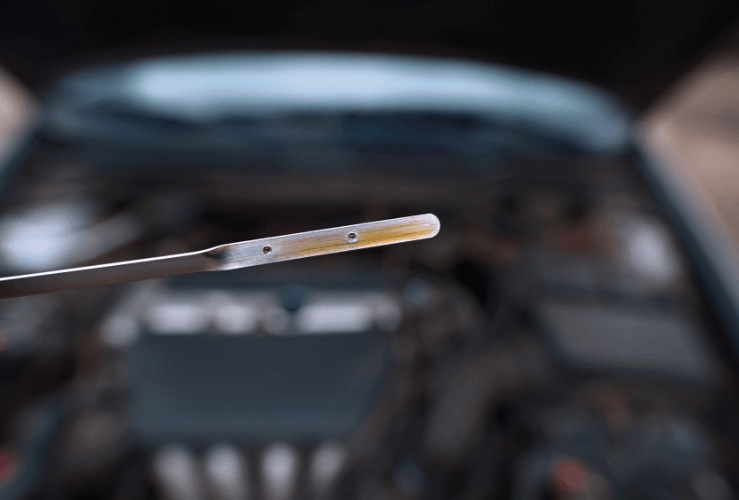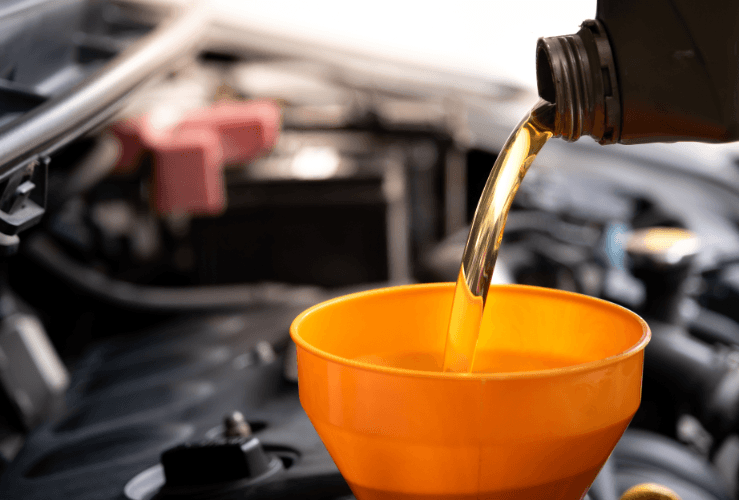Oil is cheap; car engines cost thousands of pounds to repair or replace.
Learn how and when to do an engine oil check…

Keeping your car's engine oil topped up is Maintenance 101: if you know almost nothing about vehicle maintenance, you should still understand the importance of keeping your motor well-oiled!
The oil in your car engine absorbs heat, reduces friction, and cleans the moving parts. Over time, oil breaks down and needs to be replaced.
If you delay or forget about topping up oil in your car, the moving parts in your engine will overheat, leading to locked-up cams and 'frozen' pistons.
The oil should be refreshed long before it starts to break down.
When should you check the engine oil level?
How frequently you change your car oil depends on various factors, including vehicle age, driving style and climate (i.e. very hot or very cold).
"Every 3,000 miles" was once the rule of thumb for oil changes, but modern synthetic oils tend to last longer than this - between 5,000 and 7,000 miles.
However, it's best to err on the side of caution - especially if your vehicle is old or you drive at higher speeds.
Consider an early oil change if you've recently embarked on a longer trip, or a series of longer trips.
Bottom line: always adhere to the recommendations set out in your owner’s manual.
Signs your vehicle needs an oil change

Warning light
Modern vehicles feature oil monitoring systems. if oil is low, it may trigger a 'Check Engine' light, or oil change indicator.
If either of these appear, you should check your engine’s dipstick (see below).
Increased engine noise
If your engine's moving parts are not sufficiently lubricated, there will be more friction - and more noise.
You may hear knocking or rattling sounds as the parts grind against each other.
These noises suggest your engine is beginning to self-destruct.
Smell of oil or fuel inside car
An oil smell inside your cabin could mean you have an oil leak; a fuel smell could indicate engine overheating.
In both cases, an oil change and a visit to your local mechanic is urgently required.
Smoke from exhaust
If you see smoke billowing from the exhaust, take your vehicle to get checked out ASAP. It could mean an oil leak or some other engine problem.

How to check your engine's dipstick oil level
Oil monitoring systems don’t always work as they should. It’s important you are checking oil levels manually and on a regular basis.
- Turn off the engine and allow it to cool down
- Find a rag or paper towel for wiping the dipstick
- Open the bonnet and look for a yellow or orange ringed handle on your engine: this will be the dipstick. (Don’t confuse this with the automatic transmission fluid dipstick, found on automatic vehicles). Consult your owner's manual if unsure
- Remove the dipstick and wipe off excess oil
- Replace the dipstick, wait a few seconds, then pull it out again
- How much oil should be on the dipstick? If the oil level is below the minimum fill level mark (or just above it), you should change your oil

How to put engine oil in your car
- Identify the oil cap; this should have the required oil type printed on it
- Turn the cap anti-clockwise to undo it, and lift it off
- Insert a funnel (one that has a strain to catch debris)
- Pour the oil into the funnel
- Wait for the oil to settle then double check the oil level is correct with the dipstick (see above)
Too much oil: dipstick problems
If the oil level is slightly above the maximum mark, there should not be an issue. However, if it is significantly above the upper mark, you should drain and refill the oil to the correct level.
Find out how much oil your car takes.
Different types of engine oil
There are four main types of motor oil:
Conventional oil
The cheapest type of car engine oil, made of crude oil ("organic") with additives.
Conventional oil offers a reasonable level of engine protection - but not as much as other oil types.
Synthetic oil
Man-made oil; more refined (and expensive) than conventional oil.
Synthetic blends
A combination of organic and synthetic oils; lasts longer than the first two oil types
High mileage oil
High mileage oil is designed to minimise oil burn off and leaks, and to protect the engine.
Wondering, what type of engine oil does my car need? Find out what type of oil does my car need?
Viscosity
Your engine requires an oil of a certain viscosity (a fluid's resistance to flow - or thickness). Check your owner's manual to find out what this is.
The number will look like this: 0W40.
The figure before the W (which stands for winter) denotes the viscosity at low temperatures; the figure after W represents the viscosity when the engine is hot.
Car engine oil myths
Here are three common misconceptions about engine oil.
Myth 1: Black oil should be changed immediately.
Motor oil darkens when exposed to high engine temperatures - since it oxidises. It can also darken as it picks up by-products through combustion.
Darker oil does not mean the oil is dirty or ineffective.
However, 'gritty' or 'grainy' oil should be changed promptly - since this means the oil really is dirty.
Everything you need to know before buying and changing oil
Myth 2: Thicker oil offers more engine protection
This is generally untrue, although thicker oil can be useful for older cars where the engine parts have worn down more over time.
Using thicker oil on a newer car can reduce engine efficiency.
Lower viscosity oil is often recommended for newer cars - since it aids fuel efficiency.
Myth 3: All oil additives are the same
Additives vary across oil products; different additives help engines in different ways.
For example, particular additives will be used in oil for high pressure, heavy use vehicles (like sports cars).




